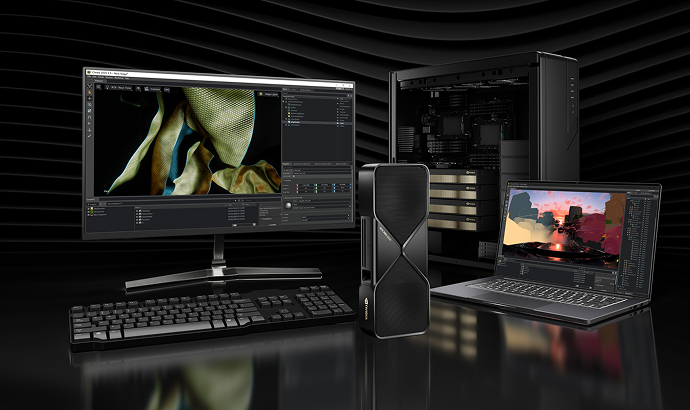

Writing About AI
Uvation
Reen Singh is an engineer and a technologist with a diverse background spanning software, hardware, aerospace, defense, and cybersecurity. As CTO at Uvation, he leverages his extensive experience to lead the company’s technological innovation and development.

NVIDIA Networking OpenFabrics Enterprise Distribution for Linux (MOFED) is an accelerated network software stack developed by NVIDIA. It is specifically designed to enhance data movement between GPUs, CPUs, and storage over high-performance fabrics, particularly those using RDMA, InfiniBand, and RoCE transport layers. MOFED is critical for AI networking because it enables zero-copy networking using Remote Direct Memory Access (RDMA), facilitates low-latency and high-throughput communication, offers optimal support for GPUDirect (allowing direct memory access between GPUs and NICs without CPU involvement), and supports high-performance MPI workloads essential for distributed training and inference. Without MOFED, even advanced GPU clusters can suffer from high latency, packet loss, and CPU overhead, hindering their full potential.
MOFED significantly accelerates NVIDIA H200 performance by addressing network bottlenecks that can limit the H200’s immense memory bandwidth and parallelism. For the H200’s 141 GB HBM3e, MOFED ensures the fast movement of large parameter blocks and token data across nodes without CPU bottlenecks. For FP8 support in real-time inference, MOFED guarantees inference traffic moves between GPUs with low latency, enabling synchronous, agent-like behaviour. It complements NVLink and PCIe Gen5 scaling by providing RoCE/InfiniBand for distributed scaling across racks, and for multi-GPU, multi-node deployments, MOFED ensures fabric-aware, congestion-free, RDMA-enabled communication paths between GPUs and NICs. In essence, MOFED prevents the network from becoming a bottleneck, allowing the H200 to fully utilise its capabilities.
MOFED, when combined with NVIDIA H200 infrastructure, unlocks significant advantages in several real-world AI use cases. These include:
Uvation takes an architecture-first approach to deploying GPU clusters, integrating MOFED-optimised networking from the outset to ensure scalability and performance. Their deployments include:
Uvation also offers ready-to-deploy H200 cluster stacks that are fully MOFED-tuned, aiming to reduce the time-to-value for clients’ training and inference workflows.
The source does not explicitly detail the Return on Investment (ROI) impact in a dedicated section. However, it strongly implies significant ROI by highlighting the consequences of not optimising the network. The central theme is that “your AI stack is only as fast as your network,” meaning that investments in cutting-edge hardware like the NVIDIA H200 will not yield their full potential if the network is a bottleneck.
By preventing performance issues such as high latency, packet loss, and CPU overhead, MOFED ensures that the H200’s advanced features (like 141 GB HBM3e and FP8 support) are fully utilised. This leads to faster training times for LLMs, more stable and responsive inference serving, and quicker data access in RAG pipelines. These operational efficiencies translate directly into:
Therefore, the ROI comes from unlocking the full value of the H200 investment, leading to more efficient AI development and deployment.
MOFED distinguishes itself from generic Linux networking drivers by being purpose-built for high-performance AI and HPC environments. Key differences include:
Without MOFED, even the most advanced NVIDIA H200 GPU clusters are susceptible to significant performance degradation and operational inefficiencies. The potential consequences include:
In essence, not using MOFED can sabotage an H200 investment by transforming a powerful AI accelerator into a system bottlenecked by its network.
The network stack is considered as critical as the GPU itself for AI performance because AI workloads, especially large language models (LLMs), demand not just raw compute power but also immense throughput, ultra-low-latency communication, and lossless data movement across multiple computational nodes. Even with the fastest GPU, such as the NVIDIA H200, its capabilities will be severely limited if the underlying network cannot keep pace.
Modern AI models are often too large to fit on a single GPU and require distributed training and inference across multiple GPUs and even multiple servers. This necessitates constant, high-speed data exchange, including model parameters, gradients, and activation data, between different GPUs, CPUs, and storage. If the network stack introduces latency, packet loss, or CPU overhead, it creates a bottleneck that prevents the GPUs from operating at their full potential, leading to idle GPU cycles and slower overall performance.
As the source states, “Your AI Stack Is Only as Fast as Your Network” and “Most AI infrastructure failures don’t happen at the model or GPU level — they happen between the nodes.” The network determines whether an AI system can scale smoothly or will stall. Therefore, a high-performance, optimised network stack like MOFED is foundational to ensuring that GPU investments, particularly in advanced hardware like the H200, translate into real-world performance gains and efficient AI operations.
We are writing frequenly. Don’t miss that.

Unregistered User
It seems you are not registered on this platform. Sign up in order to submit a comment.
Sign up now